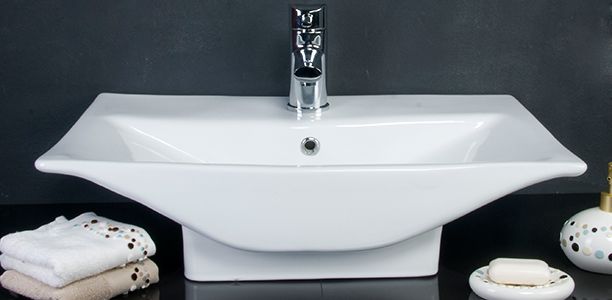Hand washing facilities include all the equipment and products used to wash your hands. To encourage children to wash their hands and to ensure that they get them hygienically clean each time they wash, it’s important to select equipment (including the sink and soap dispenser) which are accessible and easy for your child to use, and to choose hand cleaning products (things like soap and paper towels) which they like and can use easily.
Types of hand washing utensils
Hand washing facilities for children should typically include:
- Soap: which you can buy at supermarkets or pharmacies in bar or liquid form. Ordinary bath soap is not strong enough to kill germs but it removes them from the hands when it is lathered onto them during hand washing.
- Clean, running water: for washing soap off hands and the germs away. If you live in a cold environment, it might be a good idea to provide warm water for your child to wash their hands. While cold water is just as effective in washing soap off the hands, kids may not want to use it if it’s a cold day, or they may not stick their hands under a cold stream of water to wash the soap and germs away properly.
- Sink and taps: which will provide, then catch and drain the water used to rinse the hands. Your child should be able to reach the tap to turn it on and off, and reach the stream of water with their hands pointing down so that the rinse water doesn’t run down their arms.
- Stool: may be need for younger children to help them reach the taps and sink so they can wash their hands.
- Soap or hand wash dispenser: a container for the soap. If it is a bar of soap the container should be designed to allow excess water to drip away. If it is for liquid soap it will probably be a bottle with a pump dispenser attached, which delivers an appropriate amount of liquid soap.
- Disposable hand wipes: for wiping babies’ hands until they are old enough to stand up and wash using a basin.
- Paper towels: to dry the hands after washing. They are important hand washing products as if the hands are not dried they are 1,000 times more likely to pick up germs again after they have been cleaned. Paper towels should also be used to turn the tap off, so the hands don’t pick up germs from the tap. However, if having paper towels in your home bathroom is not possible, bear in mind that although it is theoretically possible for dirty hands to contaminate the tap, there is no proof that this is a major source of hand contamination. Just ensure you clean the tap regularly (as you should other objects and surfaces that may be frequently touched and contaminated by dirty hands).
- Paper towel dispenser: which keeps paper towels clean while they are waiting to be used and allows them to be easily removed.
- Bin: which can be opened without using the hands (e.g. with a foot pedal) for disposing of used paper towels safely.
- Moisturising Lotion or cream to rub into the hands after washing. This reduces the chance of skin irritation.
- Alcohol based hand sanitisers: for use when you’re out and about and don’t have access to soap and running water. For example you might use them at the park or during a shopping trip. Take care to keep them out of reach of children when not in use as they are dangerous if children drink them.
If your child is hospitalised or visiting someone in hospital, they may need to wash their hands using an anti-microbial soap or alcohol based gel. Both these products kill germs (rather than just removing them from the hand, like plain soap).
Setting up appropriate hand washing facilities for children
Setting up hand washing facilities that are appropriate for your child’s age is an important step in encouraging them to wash their hands correctly. There are many things you’ll need to consider. Cost is an important factor for most parents, so you’ll probably want to compare prices. But you’ll also need to consider quality, for example making sure soaps and towels are not too harsh for soft young skin.
Permanent equipment
Permanent hand washing equipment, for example the sink and soap dispenser need to be age appropriate. For example, the sink needs to be the right height for your child, or a stool should be provided so they can step up and reach the tap. Soap and paper towel dispensers also need to be within your child’s reach, and be designed so that your child can operate them to remove the soap or towel. Bear in mind that hands can be re-contaminated when turning a tap off if a paper towel is not used to cover the tap, so they’ll need to be able to reach paper towels from the sink (unless you have an automatic tap in your house).
Consumable products
Consumable products include soaps and paper towels. There are hundreds of different brands of hand washing products, so it’s important to take measures to choose ones which are not only safe and effective, but which your children will enjoy using as well. For example, they may enjoy using one product more or less than another if one irritates the skin and the other does not. Checking your children tolerate all the hand washing products you buy is one important consideration. But your child may also have a preference based on the texture, colour or fragrance of the product. Even if you can’t fully understand why little Jane needs to wash her hands with green soap, if buying green is what it takes to get her washing her hands, it’s probably worth it.
Choosing the right soap
- Choose liquid soap, not a bar of soap. Liquid soap is more likely to be used (most kids enjoy using devices like to pump dispenser) and less likely to become contaminated with germs from the hands of people who have already used it.
- If you use a bar of soap, choose a small bar which is easy for your children to grasp and manipulate while they are lathering their hands.
- Choose hand washing products with low irritability- they’ll be less likely to cause skin irritation compared to heavily fragranced soaps.
- Test a range of products until you find one your child likes. This is particularly important if you find that one is irritating your child’s skin;
- When possible, allow your child to help make the decisions about the hand washing products you use, for example let them choose which soap they would like to buy.
Choosing the right hand sanitiser
- If you want to buy an alcohol based solution to use when you’re out and about but don’t have access to water, it’s important to check the alcohol concentration. Choose a product that contains at least 60% alcohol.
- Alcohol based solutions are typically superior to gels;
- Choose an alcohol-based hand sanitizer with a fast drying time.
- Bear in mind that hand sanitiser is flammable and ensure it comes in packaging which has been approved for storing flammable liquids.
- Be aware that alcohol-impregnanted hand wipes are not recommended for washing children’s hands but are the best option for washing the hands of babies who cannot yet stand at the sink.
Choosing the right hand drying products
- When drying hands use a disposable paper towel not a multiple use cloth towel which can harbor germs from the hands of previous users. If paper towels are not practical, for example because they are too expensive, use a clean cloth towel.
- Choose soft paper towels. If they are too rough they may irritate the skin on your child’s hands and they may not use them.
- If you’re using public facilities, dryers which blow hot air onto the hands are also an effective way to dry the hands without recontaminating them. However, they are only effective if used for enough time to dry the hands completely. If your child can’t stand still for five seconds, using a paper towel might be faster and more effective.
Hand washing facilities in childcare settings
If your children attend child care it’s a good ideas to check out their hand washing facilities when choosing the centre. Look for a childcare centre with child-sized sinks and taps that are stocked with liquid soap and other appropriate products.
Where should hand washing facilities be located
Putting hand washing utensils in the places that your child will need to use them is just common sense. It’s pretty obvious that children will be more likely to wash their hands after going to the toilet if there are appropriate hand washing facilities in the toilet or bathroom. There are many occasions when children should wash their hands and it won’t always be possible to have a place to wash their hands next door. But if you think about when your child will need to wash their hands, this can guide setting up hand washing facilities. For example if your child plays outdoors a lot, or you are having an outdoor event for children like a birthday party or sports day, it might be a good idea to have outdoor hand washing.
Cleaning and maintaining children’s hand washing facilities
Like all hand washing facilities, children’s hand washing facilities must be properly maintained to make sure that children want to wash their hands with them. Regular cleaning should include tap handles, door knobs and the area surrounding the facilities. Hand washing facilities for kids should be cleaned whenever they are visibly dirty. They should also be cleaned periodically even if they don’t appear dirty. For example in child care centres the hand washing facilities should be cleaned every day, even if they are clean to look at.
Because kids are kids, you may also need to check hand washing facilities after they have used them (especially while they are still learning to wash their hands independently) to ensure that they have put everything back in the correct place. For example you may need to check that bar soap ended up back in its container, and not stuck in the plug hole of the sink.
The permanent equipment in your hand washing facilities may also need to be maintained once in a while. For example if the washers on taps wear out, they will become harder to turn on and off and this will make it harder for children to wash their hands properly. If the soap dispenser is not pumping properly, children will find it harder to use the soap. You should check the soap dispenser is working properly each time you refill it with soap- it’s also a good time to give it a clean.
If you keep alcohol-based hand sanitiser for outings, check the used by date and that the container is intact on a regular basis. As it’s alcohol-based, hand sanitiser is flammable and need to be kept in a packaging approved for storing flammable liquids. If you choose to use cloth towels for drying hands they should be used by only one person, washed regularly and hung up to dry in between uses.
It’s also important to ensure that consumable products like paper towels and soap are well stocked and don’t run out. Clean running water is available on tap in Australia, so you shouldn’t have to worry about that running out, unless you’re on a picnic or other outing away from modern conveniences. However, other products like soap, paper towels and moisturising lotion run out, and you’ll need to check and replace these regularly.

More information about handwashing techniques and activities for kids.
References
- National Health and Medical Research Council. 2013. Staying healthy- preventing infectious diseases in early childhood education. 5th Ed. (cited 19 January 2014). Available from: (URL Link)
- Reeves LM, Priest PC, Poore MR. School Toilets: facilitating hand hygience? A review of primary school hygiene facilities in a developed country. J Public Health (Oxf). 2012. 34(4): 483-8. (Full Text)
- South Australian Health Infection Prevention and Control. Hand Hygiene Guideline. 2010. (cited 19 January 2014). Available from: (URL Link)
- Mayo Clinic. Hand washing- dos and don’ts. 2011. (cited 19 January 2014). Available from: (URL Link) and (URL Link)
- Utah Department of Health. Hand Washing Information. 2005. (cited 19 January 2014). Available from: (URL Link)
- National Health and Medical Research Council. Handwashing. In Preventing Infectious Diseases in Childcare. 4th Ed. 2006. (cited 19 January 2014). Available from: (URL Link)
- Department of Health and Human Services- Montana. Standard 3.021- Handwashing Procedure. 2013. (Cited 19 January 2014). Available from: (URL Link)
- Clinical Excellence Commission. Patient’s and Visitors- what you need to know about hand hygiene. 2006. (cited 19 January 2014). Available from: (URL Link)
- World Health Organisation. WHO guidelines on hand hygiene in healthcare: (Advanced Draft – Clean Hands are Safer Hands. 2005. (cited 19 January 2014). Available from: (URL Link)
- Hand Hygiene Australia. 5 moments for hand hygiene. 2010. (cited 19 January 2014) (URL Link)
- London Borough of Lewisham. Food safety at outdoor and temporary events. 2010. (cited 19 January 2014). Available from: (URL Link)
- Centres for Disease Control and Prevention. When and how to wash your hands. 2013. (cited 15 February 2014). Available from: (URL Link)
- Centres for Disease Control and Prevention. Show me the science- how to wash your hands. 2013. (cited 15 February 2014). Available from: (URL Link)
- National Health and Medical Research Council. Australian Guidelines for the prevention and control of infection in healthcare. 2010. (cited 15 February 2014). Available from: (URL Link)











